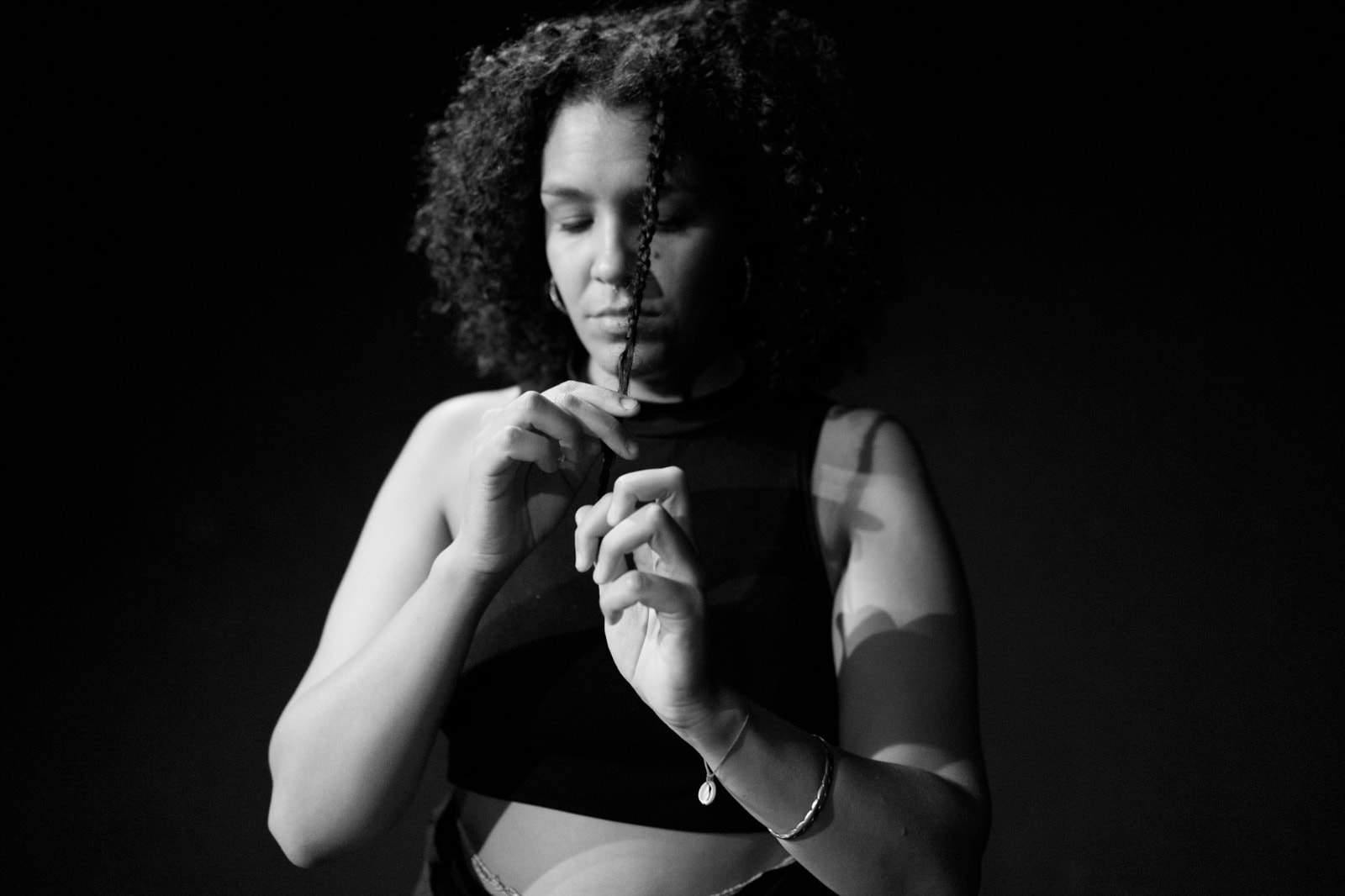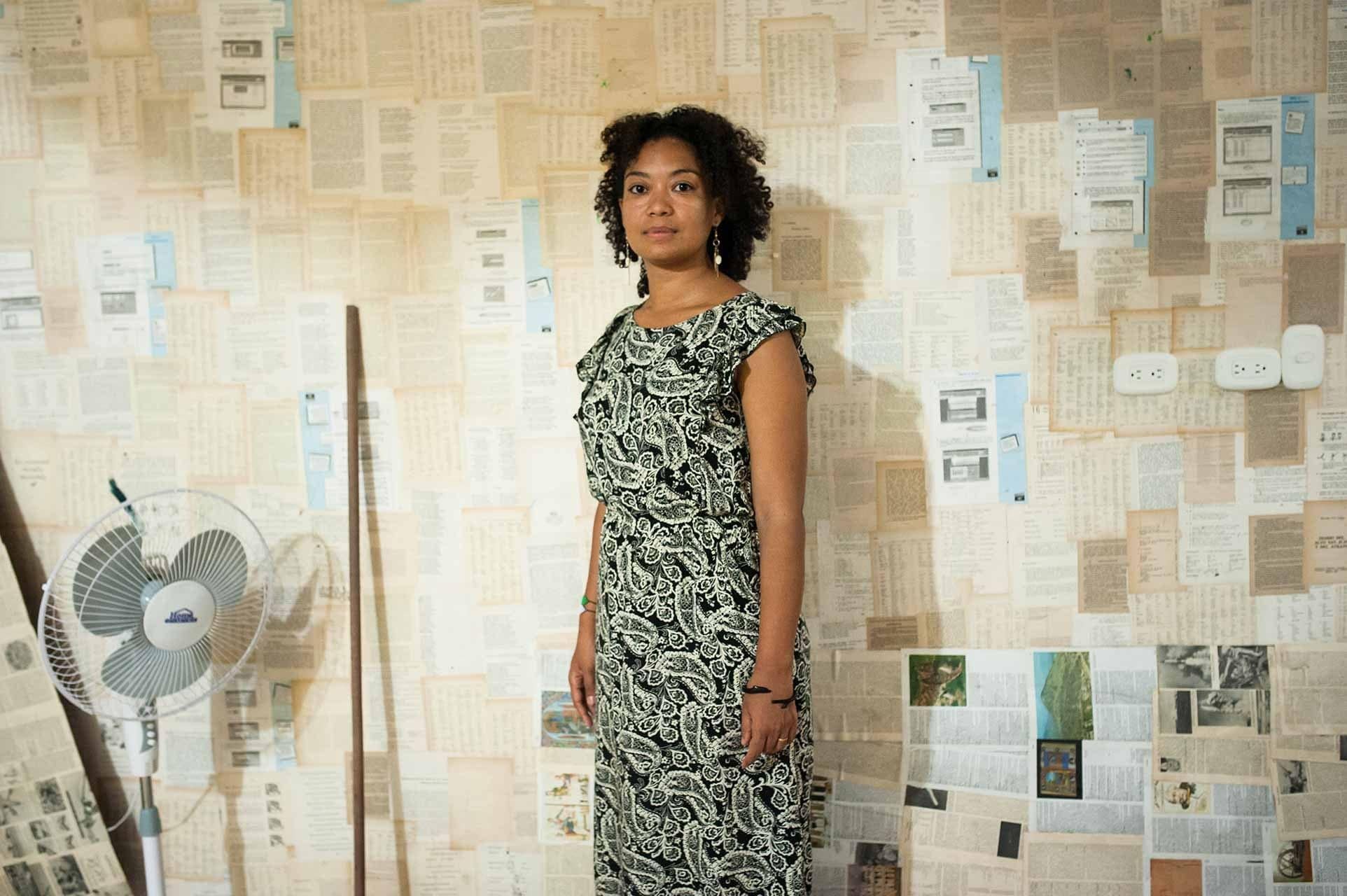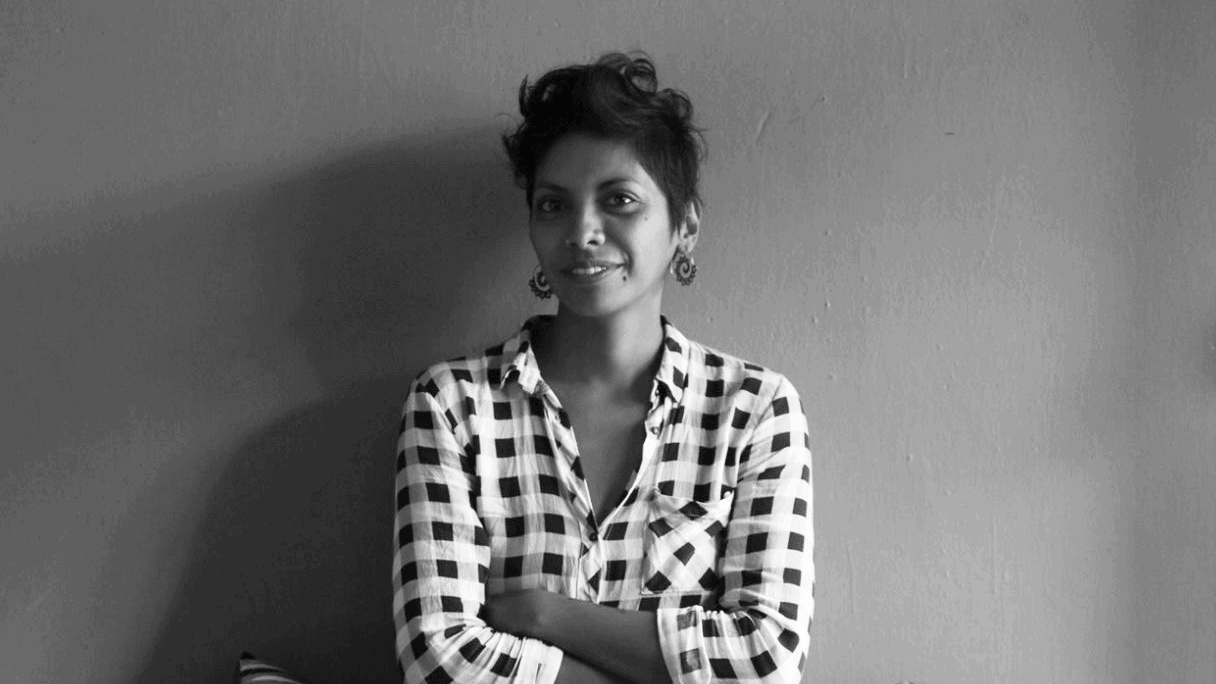Directors – Juan Pablo Marin – Azul Río | Sound- Pablo Tobar Panchoaga
Edition, Assembly and Color – Lina Botero – Paolo García Nigrinis Photography- Jeison Riascos – El Murcy
Jorge Panchoaga – Miguel Angel Ramirez – Marcela Vallejo – Claudi Carreras – Aquelarre Ilustración – Jahleel Shiloh – Fundación Escuela Canalón – Ximena Vasquez V – Centro de Formación de la Cooperación Española Cartagena (Colombia) – Agencia Española de Cooperación Internacional para el Desarrollo, AECID
African Americans in Cali: artists appropriating their territory
Cali, in southwestern Colombia, is the Colombian city with the largest Afro-descendant population and the second in Latin America after Salvador de Bahia in Brazil. According to official data, approximately 26.2% of the population is self-recognized as Afro-descendant. Some years ago, this city has declared itself the “Capital of the Pacific”. It is located 2 hours from the port of Buenaventura, the most important in the country. And it has been the recipient of a migrant and displaced population from the coast.
Beyond its political and economic pretensions, Cali is a city of the Pacific coast. It is separated by the Western mountain range, but the coast came with the people, and all those people have transformed the city, they have contributed to everything that it is today. Despite this, the Afro-descendant community does not live in the best conditions. Oppression and discrimination are historical.
Currently, the majority of the Afro-Colombian population of Cali resides in an area of the city called the Aguablanca District, which occupies four communes in the east of the city and which expands its influence to as many neighbors. The District was, during the National Strike, one of the most active epicenters in the country. People have things to say and demand.
Felipe and some of his mates participated for a week in a workshop that proposed starting from the oral memory that as members of Afro-descendant communities they have received from their elders and transmitted to new generations. The objective was to explore the relationship between memory and imagination and thus promote visual and sound narration by creating images. What Felipe says was something he explored in the workshop.
Azul Río is a visual arts student and lives in the Aguablanca District, Francy Elena Riascos is a Cali-based singer from Micay, who belongs to the Canalón School. The two young women participated in the workshop. Azul was also one of the filmmakers of the video that accompanies this publication, and Francy belongs to the collective Veo yo, which was born in the workshop. The two of them talked to us about their experience at the workshop.
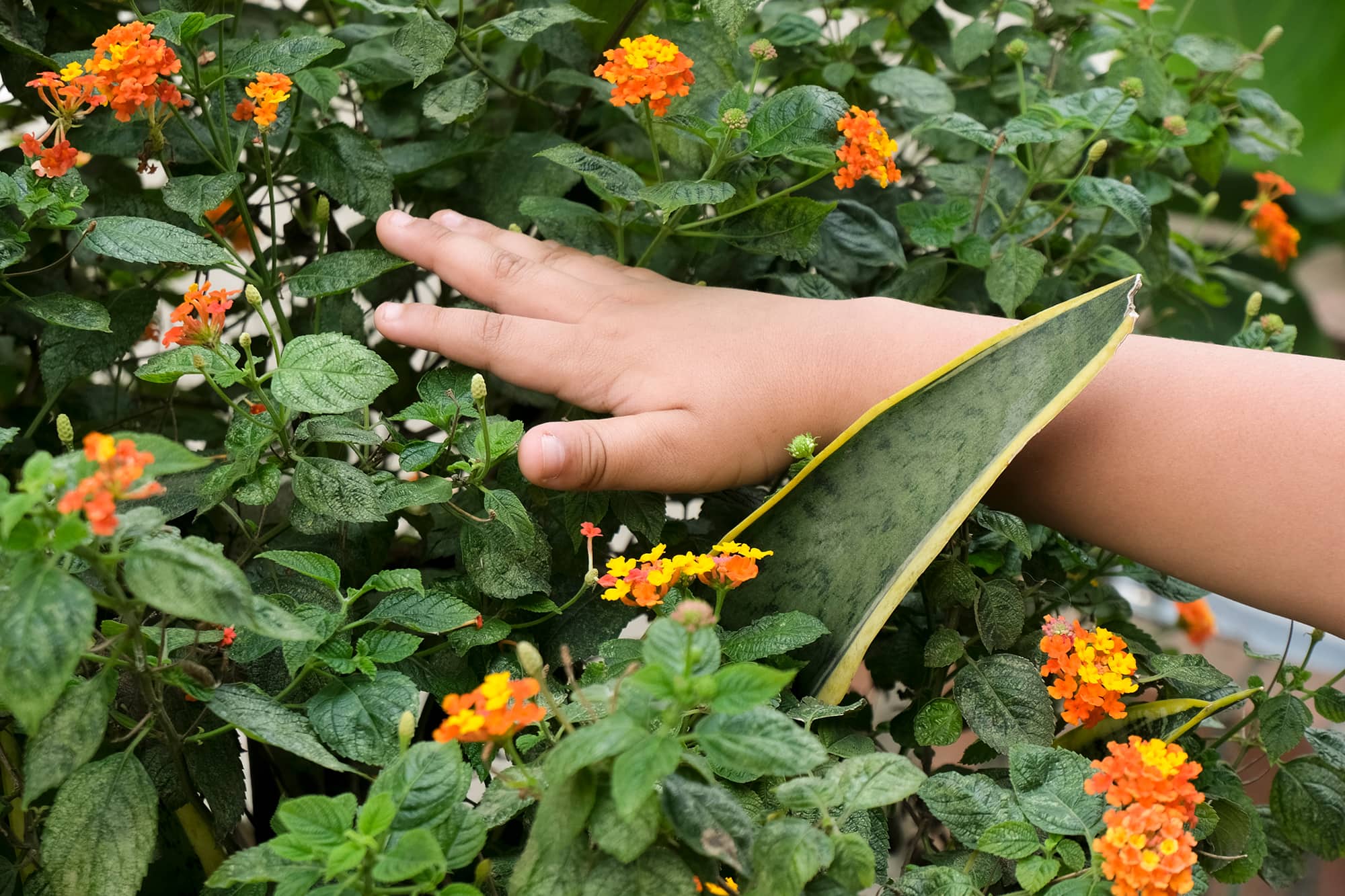
Colectivo Audiovisual Veoyo
Azul: For me, the experience was very enriching. I study arts, and I am part of the Aguablanca District, I grew up here in eastern Cali. It was very interesting to share this creative process with people who are not part of the arts and who do not handle this academic discourse. I realized the sensitivity that exists and the capacity that we all have when it comes to creating.
Pedagogically, it caught me. As a black woman from eastern Cali, I have some prejudices about some types of cultural processes that take place in black communities by people who don’t belong to the communities. A bunch of black artists is questioning that a lot. For us, it is very important to appropriate our territory and start working from there. So, at first, I was a little forewarned, but the truth is that I came across a completely different process.
It is a process in which people are empowered. It was not this thing to say what to do, but to say “guys, you can do this. This is the tool, but that is not the purpose. The question is what are we going to tell and how are we going to do it. And from there to appropriate our territory.”
Johan, one of the guys I met in the workshop, is making a series of videos, he is a musician from the Canalón school and I am going to assist him in one of the videos. I like that, it’s like wow, he’s creating a series about everyday life with the neighborhood kids and I like that. I feel that there was a social impact and a creative impact.
It was not a process of following guidelines, but it was completely based on what we wanted to do, that is complete freedom. The themes correspond to the territory, the centrality is in the ancestry from orality. For me as an artist it was a very enriching workshop, I realized how else I could build images.
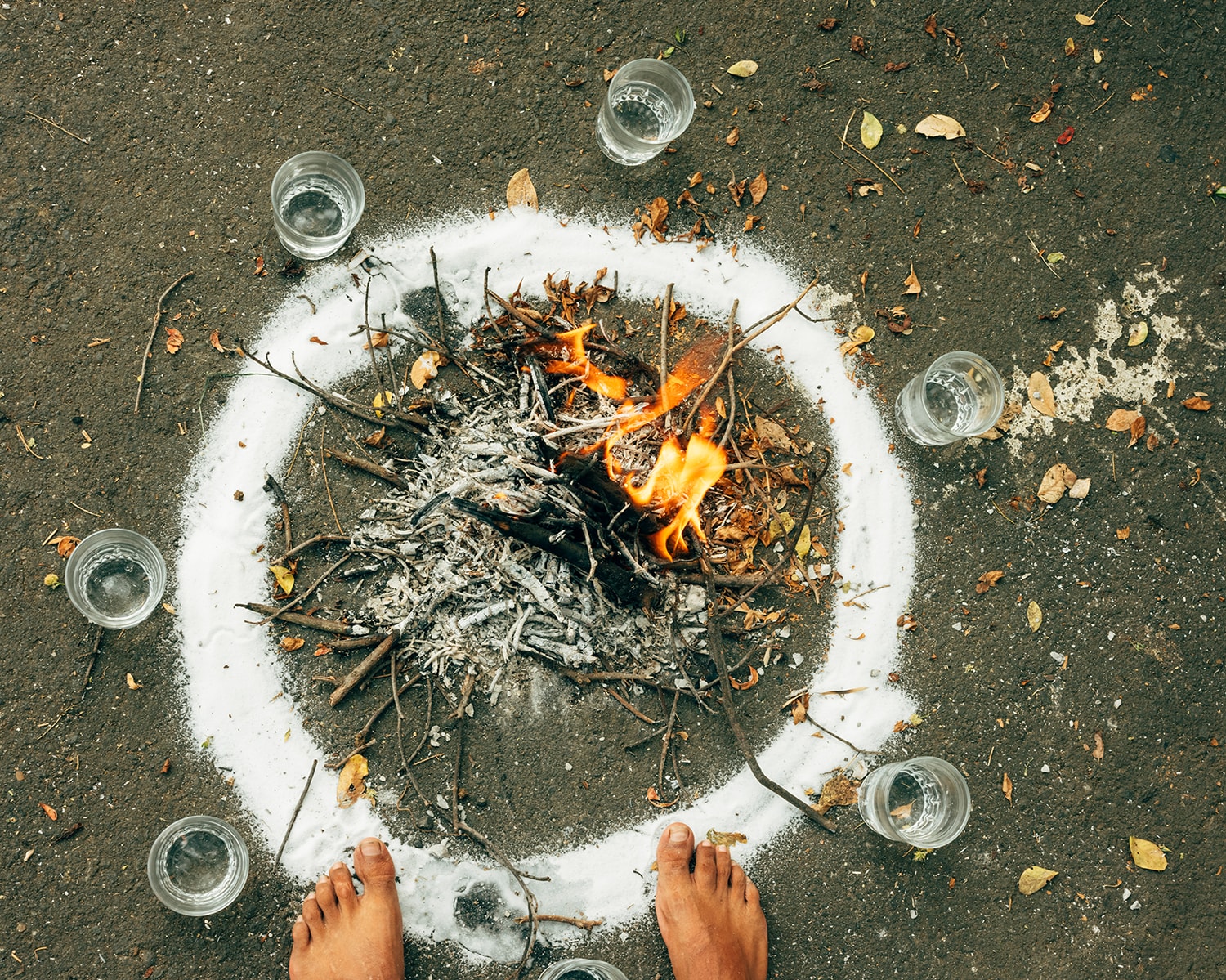
Colectivo Audiovisual Veoyo
Francy: The experience was very rewarding. First, because we Canalón School are immersed in an environment where telling stories from the audiovisual point of view is very important. What we were able to learn during that week of the workshops, we are already applying it right now.
Before the calls of the Ministry of Culture, it was our turn to find a person to make a record of photos, to edit a video and now we do it ourselves with the equipment you gave us. In addition, I fell in love much more with photography, but in the sense of being a photographer, because I like to take photos. But now I am a photographer.
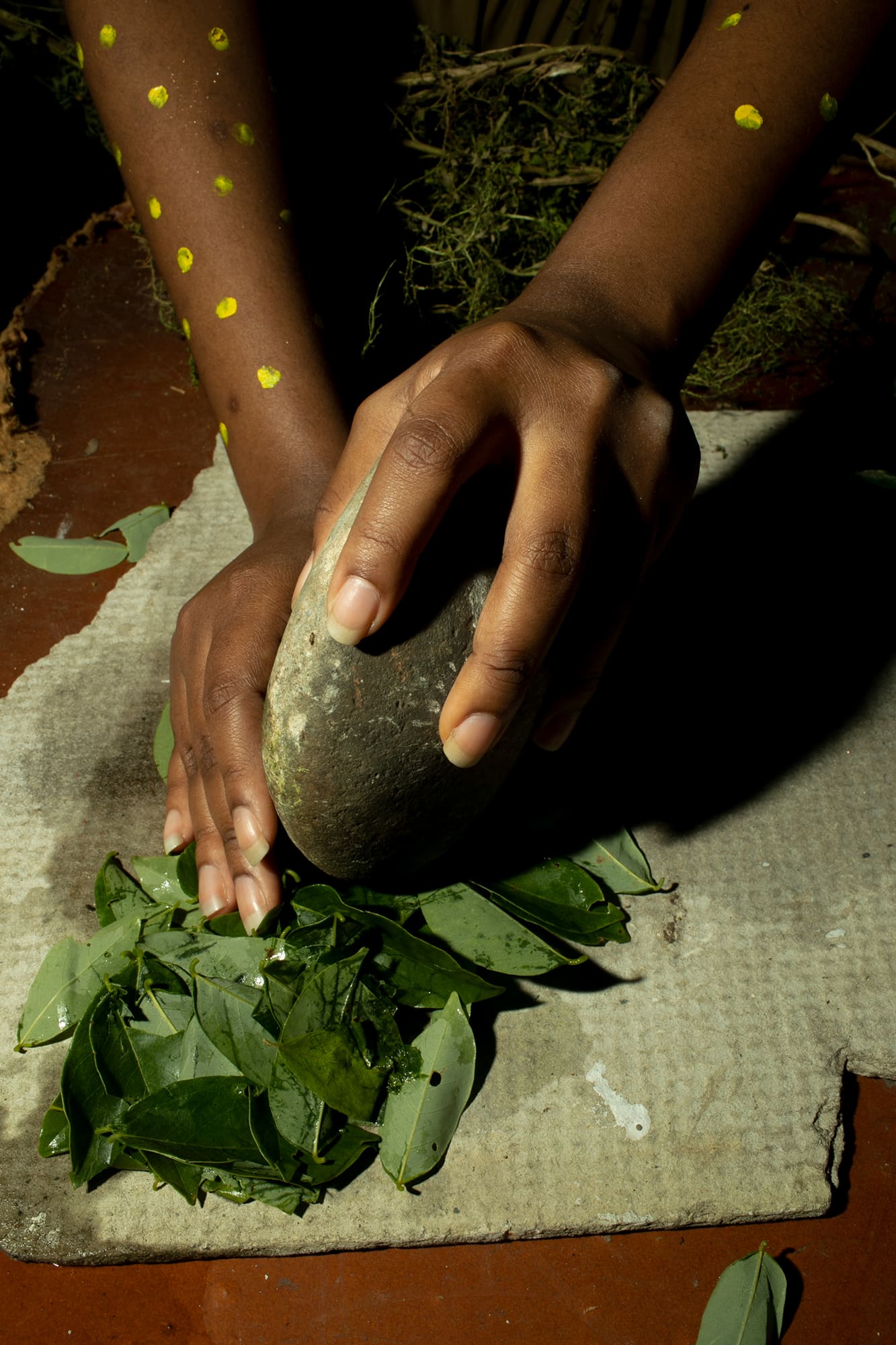
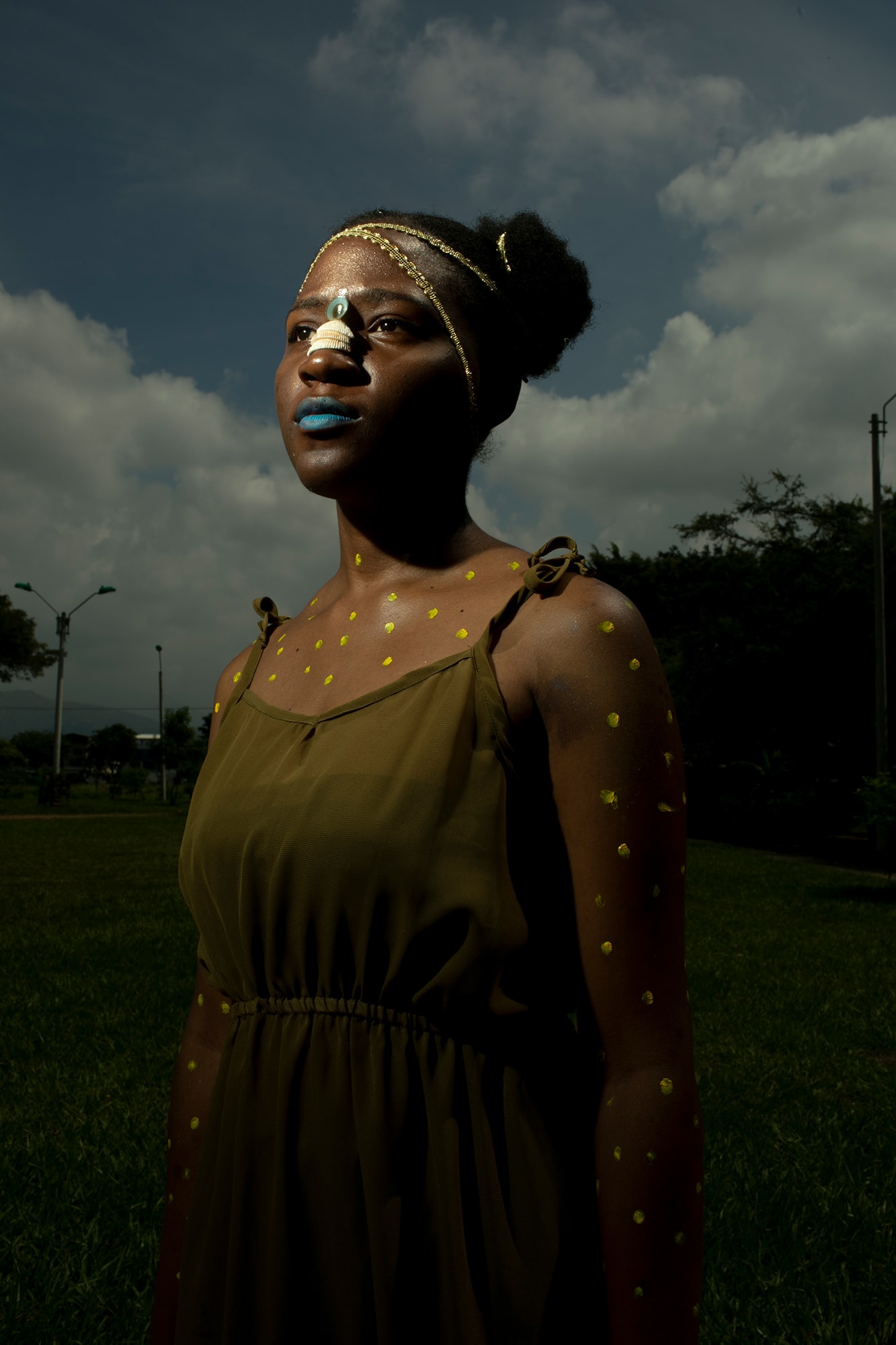
Colectivo Audiovisual Veoyo
Regarding the creative processes and the ways to build images, did you learn anything new in the workshop?
Azul: In my process, the construction of the image has been presented as something very intuitive and something that is also born from the everyday. Right in this workshop, I connected with something that I had been working on orality and from there how the image begins to be built in my mind and how this can be materialized in a very pragmatic way. I think it is important for the artist or the creator or for the person who wants to create an image to be recursive, not to limit oneself.
That made me more aware and more present. Understand that what is in my house is closely related to my ancestry and my roots. I mean, everything is very close.
For example, when we made an image that I think is called the Siete enfermedades (Seven diseases), the midwives started telling us, and I illustrated using colors and textures. There I remembered achiote, in my house we use it. And I took it, and we built an image together, we all contributed something, with the basis that the midwives gave us in their narratives.
All the items were in the house. That, on the one hand, confirms to me that everything is there, that everything is connected, that what I do is self-referential, and that it is there because it also has its meaning. And that can be something collective.
Francy: The methodology of the workshop seemed very pertinent to me because it was trying to tell a story through our ancestors, we always linked it a lot to our ancestors, to the culture. We have been listening to stories from some elders and it is very gratifying to tell their stories. It all started with the history of one, then the history of another and now the history of a group in general.
Something that caught my attention was that I was able to link something that had happened to me and experiences from my childhood, at a time when we were listening to audios. I connected a lot with the water theme. I like to swim a lot, I am from the territory and in my town, there is a river. But the sound connected me to a bad experience when I was little I almost drowned in the river.
It was difficult and at the same time also gratifying in the sense that I said life again made me continue to continue because at that time I was 12 years old and at home, they did not realize what was happening. It is very nice because this workshop is linked to one’s own life experiences.
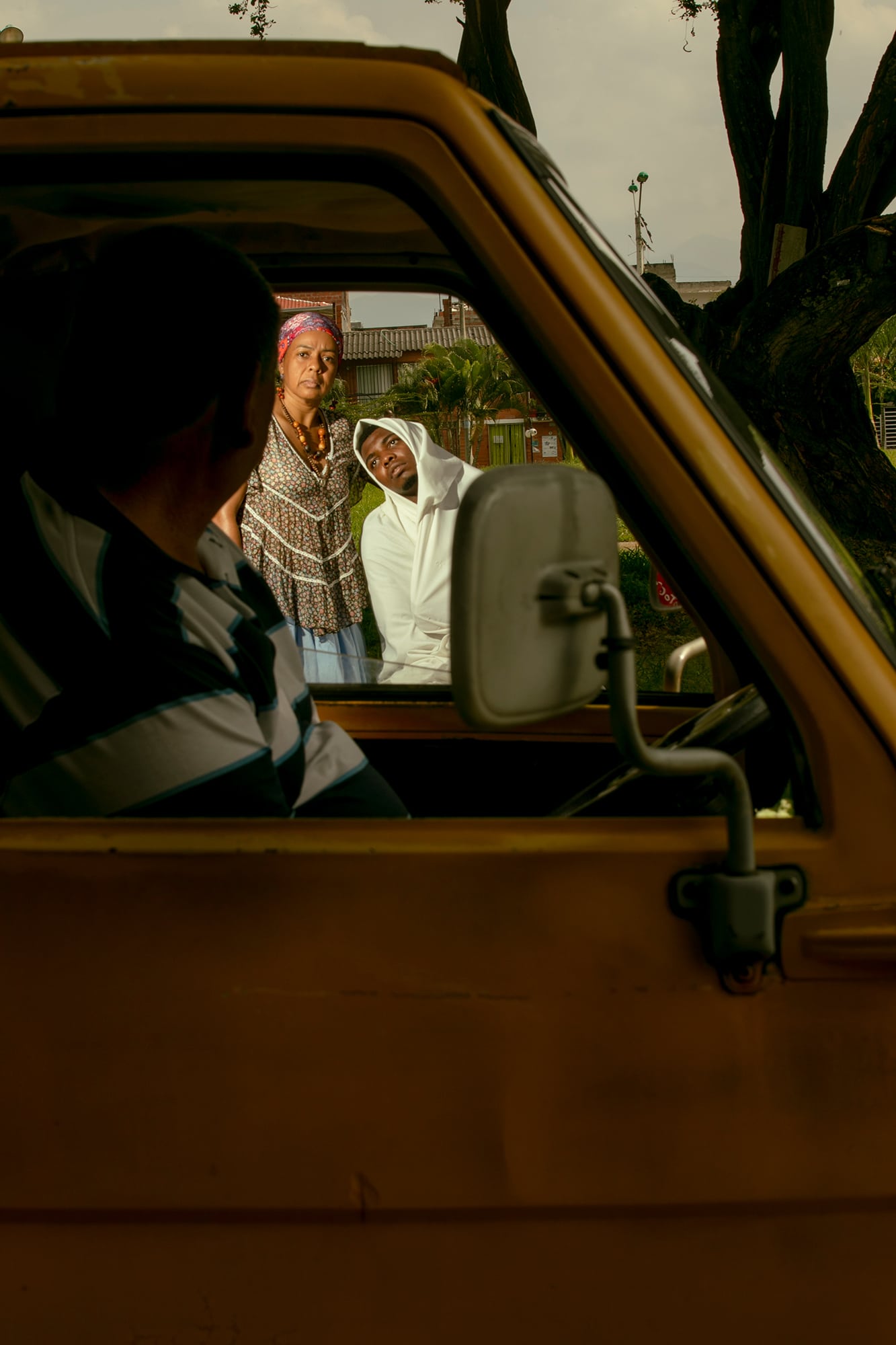
Colectivo Audiovisual Veoyo
Precisely something that we think for the workshops has to do with following the own images. To recognize how it has been built throughout our lives, with the historical base of our group, town, or territory. In that sense, could you tell me about another image that you have built in the workshop?
Azul: I am going to talk about one that is not built, but thanks to the fact that everything was reflected in a diary, I am going to do it. The fact that I had captured it, drawn it, and written it makes it somehow already exist. This image was born from some sounds that we heard in the workshop. They were very high-pitched sounds, very strong. I immediately saw myself walking in a very dark space, which I defined as an indigo blue. She was walking in a white dress. All this I saw with my eyes closed and listening. Then a scene begins to build, a situation, where I was there, walking backward with a white dress with a very defined image. And suddenly I turned into a ball. I ended up in a fetal position covered with something translucent, a liquid that later connected to the sea. All this in a matter of minutes and only listening to a sound.
Francy: one of the stories the elders told us was a result of the forced displacement. They had to leave their towns to settle here in Cali and the change was too hard. More than one of them had nowhere to live. Some of them arrived at the home of a relative with their four seven children. Listening to them made me think about how hard it was, and I began to question my life, and wonder how can I be more empathetic.
We tried to show the situation of one of them in which she had to take her sick child to be treated in a distant place.
Cali is a very Afro-Pacific city, but many things are still missing. For example, it was difficult to tell some stories about ancient medicine because we didn’t have some herbs. Here it was our turn, more than once, to go to certain places far from our homes to conserve and follow certain herbs that had to be registered. On the other hand, one in the territories always has it on the roofs outside the house or if a neighbor has one, she asks for a little. On the other hand, here it is very difficult.
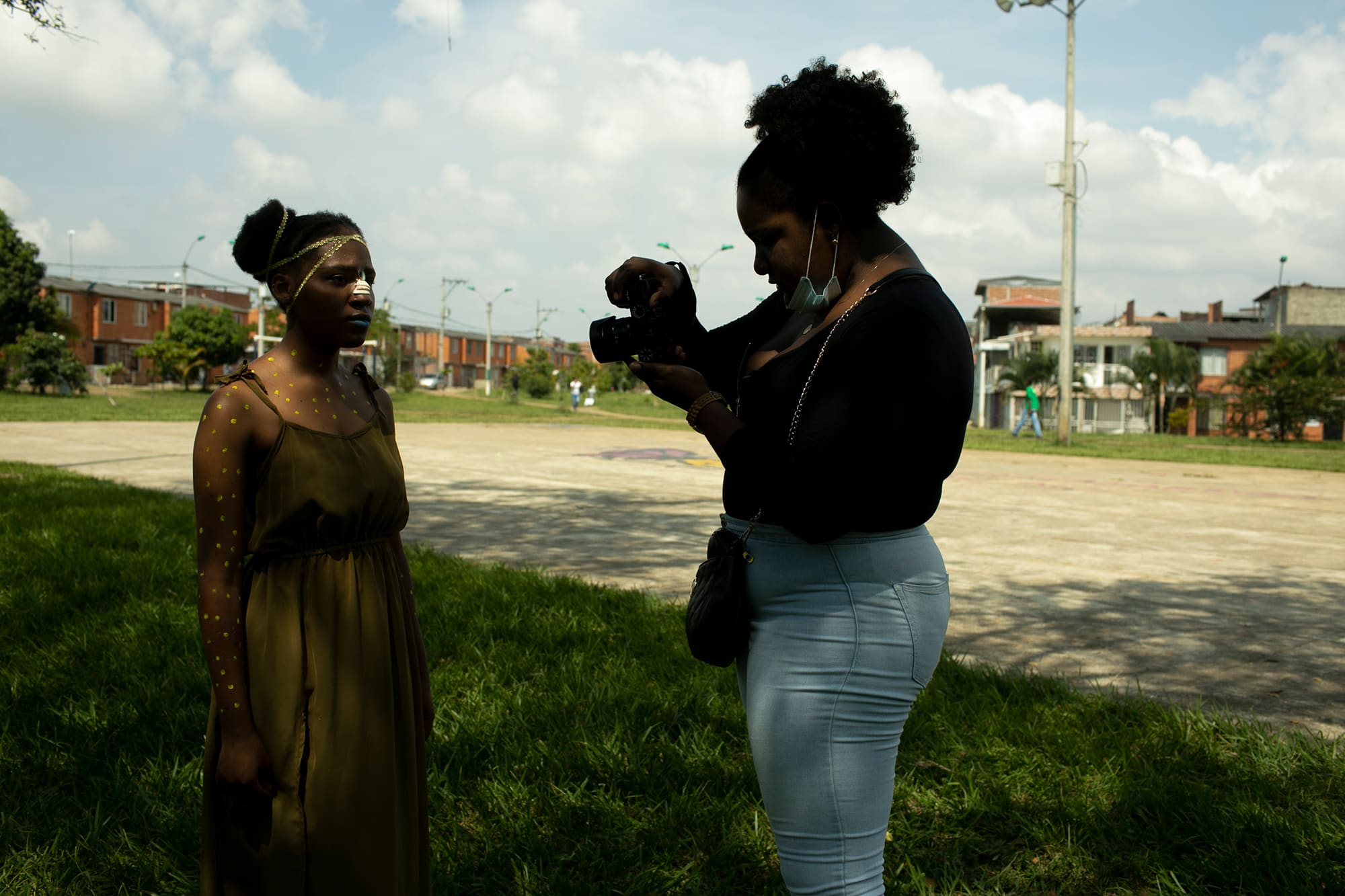
Colectivo Audiovisual Veoyo
What did the other colleagues say?
Azul: One of them turned out to be a cousin of my cousins from Juanchaco Ladrilleros. That also seemed nice to me, I was very happy to know that there was another person from the territory in that space. I am very happy that, despite the migrations to the City, we can coincide in a resilient space and know that like me, they also need to investigate and preserve their roots.
A collective called Veoyo was created in the workshop. How was that process?
Francy: It was commented on by the same workshops, especially El Murcy. He told us: “guys, we cannot just keep the workshops, we have to create a collective so that they continue working.” And so it was born. We have been working, putting into practice everything we learned.
